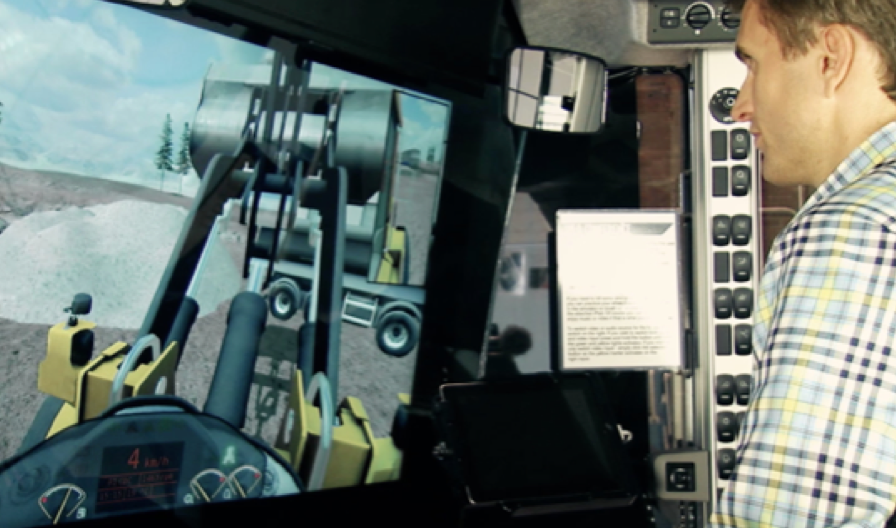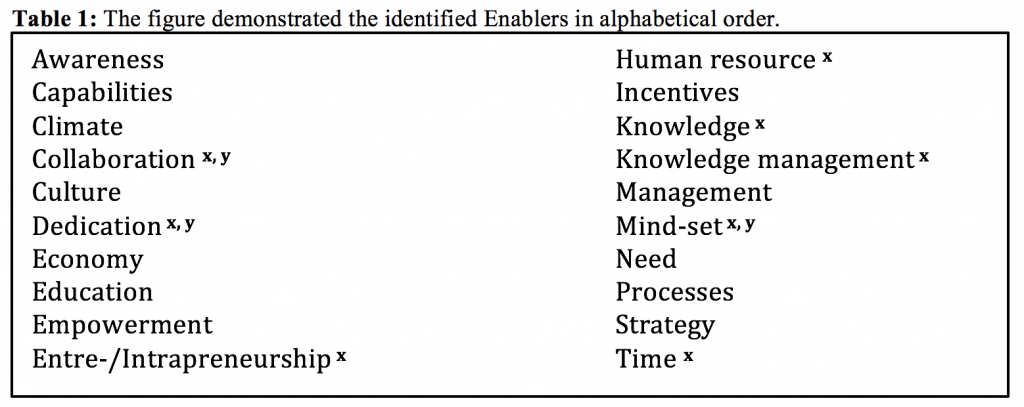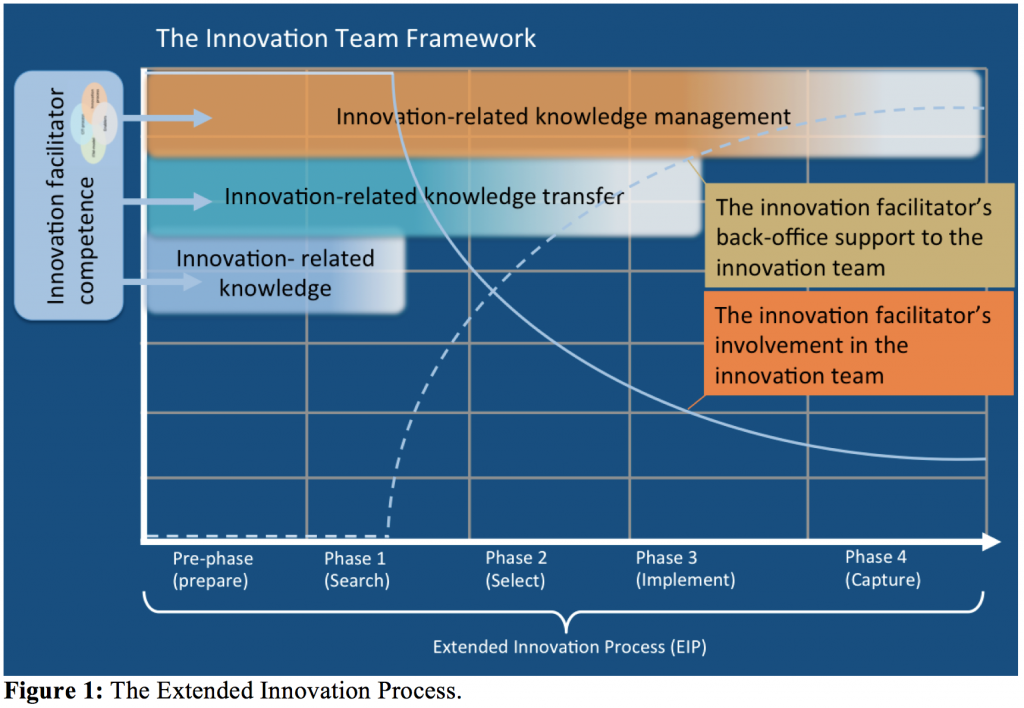
Innovation teams; a deep dive into Mikael Johnsson’s research
- Post by: Tobias Larsson
- 15th December 2016
- No Comment
Mikael Johnsson’s research concluded his PhD research by presenting his thesis a while back. Here is a summary of his work. Mikael is now a postdoc with us.
What was studied in your research, and who participated?
Factors that enable innovation teams to conduct innovation work have been identified and studied through a longitude research on three industrial companies, where five innovation teams were studied. Two SMEs, Calix and EEPAB, participated with one team each, and Volvo Construction Equipment participated with three teams.
Why was that a problem worth studying?
The background to this research is that innovation is needed if one wants to stay in business in the long run. At the same time the innovation work has to be conducted in a faster pace than yesterday due to the ever-increased product life cycles. Further, a modern company today needs to be innovative in itself, where not only R&D are the innovative employees within a company. Therefore it is of interest to educate and involve as many employees as possible in innovation work when creating an innovative organization where innovative initiatives are encouraged. Prior research has proved that X-functional teams are fast and effective when it comes to product development, and teams that work agile are significantly fast. All together, this caught my interest to explore create X-functional innovation teams as a way to speed up innovation work as well.
Though, there are a some problems identified in prior research, which makes this research relevant:
- First, the team development process is full of conflicts and problems, where only 10-15 teams enters the performance phase after about 6-8 eight months of work. Even fewer teams enter the high-performing phase where everybody is a high-productive, time fly and the feeling of flow is in the air. If this time could be shortened and more teams could be high-performing the team would save tons of energy, and probably enter the marked faster and by save both time and money to the company. Additionally, it would probably energize the team itself and stimulate colleagues within the company to participate in the innovation project. There are a lot of research that demonstrates how teams could be created that may stimulate innovation output, however the focus on a process to create teams with the deliberately purpose to conduct innovation work that avoid team related problems have not yet been found. If this could be solved, i.e. a process to create high-performing innovation teams, it could serve a process to secure a positive start for the innovation team and its project;
- Second, prior attempts of creating X-functional innovation teams have had problems in performance and learning due to the high complexity of innovation work, caused by the team members’ lack of innovation-related knowledge and experience from managing practical innovation projects. Some research has been conducted where innovation drivers and champions have managed the innovation projects. This with great innovative results, but no sustainable learning effects, which makes it interesting to study how inexperienced innovation teams could be educated in innovation management;
- Third, factors that enable innovation (innovation enablers, enablers) is well researched. However, enablers that affect innovation teams have not been in focus in previous research, nor how innovation teams assess the enablers’ importance and how the enablers affect innovation teams’ projects. To provide a picture of what enablers to keep in focus, and knowledge in how these affect innovation teams’ projects make sense as it directly relates to innovation teams’ performance.
With this background knowledge I decided to explore factors that enable innovation teams to conduct agile innovation work in an industrial context. What do they need, when do they need it and how could it be executed? A research question was stated as follow:
Which innovation enablers are important for innovation teams when conducting agile innovation work in an industrial context?
Results from research
Five main findings were identified throughout this qualitative research and resulted in the Innovation Team Framework (ITF).
- The Extended Innovation Process (EIP): an innovation process extended with a preparation-phase in which the innovation team is created and prepared for the forthcoming innovation work.
- Twenty factors considered to be important for innovation teams were identified in a literature review covering 208 papers.
- The process of Creating Innovation Teams (CIT-process): a process to create innovation teams to avoid group development problems and to start performing right away.
- The Innovation Team Model (ITM): a holistic model of innovation teams before innovation work begins, demonstrating its relation to the individuals within the innovation team and the organizational context.
- The Innovation facilitator: an individual with certain skills, experience, and characteristics who supports management, the convener, and the innovation team throughout the EIP.
The EIP by its preparation-phase is considered to be an innovation enabler in that it provides a visible map for the innovation teams that enables the members to organize themselves and to overview forthcoming and conducted activities. The preparation-phase is inspired by the findings regarding that time is needed to organize management and get approval for innovation teams to be created and time to let the innovation team be created, but also that the innovation facilitator was seen to be very important in that phase. Further, the EIP also serves as a platform to the ITF to visualize how the other enablers are related to each other.
As every modern innovation process today, this one is also cyclic and iterative. The difference is however that the preparation-phase is where the innovation team is created and prepared for the forthcoming work (demonstrated below). If not succeeding with the preparation-phase work, one should consider to recap and do the work ones again before kicking the project off to avoid forthcoming problems. The rest of the phases are similar to other innovation processes, i.e. to generate ideas, develop the ideas to the market, and harvest the values that are created.
Twenty factors considered being important for innovation teams from an organizational-, team- and individual perspective were identified in the literature review. They were all found to be important in on-going innovation work.
However, some factors were found to be more important than others by means of affecting the projects in a negative way if they were not fulfilled, marked with an “x” in Table 1. An interesting finding related to this was that all the participating teams blamed lack of time and human resources for upcoming problems. Conversely, other factors were found to have positive effects on the projects that experienced problems, marked with a “y” in Table 1, which were very interesting and indicate that these factors are the ones to keep an extra focus on. Another interesting finding was that the team members and the team sponsor assessed their importance differently. The team members assessed project related factors as most important. The sponsor assessed organizational factors as most important to begin with, to change focus over time to focus on the team in the latter part of the project.
The CIT-process is considered to be an innovation enabler in that it provides a structured process to create innovation teams within an organization. Its biggest contribution to the innovation team is to introduce the management and guide the convener when gathering the innovation team members before the innovation project kicks off. The process of creating innovation teams, the CIT-process, is a hands-on tool to use step-by-step when creating innovation teams, taking place in the preparation-phase of the innovation process. It serves to generate teams that are taking ownership of the project and drives it together as a team, and not as a working group.
It starts by having management’s approval and a team sponsor. Next step is to identify a convener who gathers a X-functional team of dedicated members. The convener, is not a team leader or project manager, but more of a person who keeps the team together and strives for a unite leadership. Before the convener gathers the member, he or she is introduced by an innovation facilitator to the innovation process, the group dynamic process, how to conduct agile innovation work in practice, and what team members to look for. The team members are suggested to be key persons within their area of knowledge, not afraid of stretching rules, navigating through the organization and invite new competences to the team when needed. At the kick off, the team is carefully introduced to the forthcoming work in the same way as the convener was, they set their goal together and off they go under supervision by the facilitator.
Within this research, the use of the CIT-process resulted in faster learning progress compared to learning from seminars. Furthermore, the learning was sustainable in the sense that the innovation teams were ready for new innovation projects with less support from an innovation facilitator than before.
The ITM is considered to be an innovation enabler as it is used to educate the convener of an innovation team. The ITM visualizes how the team should work to access and share information within the team and in the different departments where the team members usually work. It also visualizes the innovation team’s context and puts the innovation enablers in that context. The ITM contributes to create an understanding of the complex team development process a newly formed innovation team will meet. The thing is to understand, if being inexperienced in innovation work, that one has to develop the ability to detect innovation related affordances. And to do this, the team members need to learn innovation related knowledge, to fill knowledge gaps and to utilize from the information flow going on. Not only within the team, but also in the rest of the organization and elsewhere. If one practice in doing this, ones awareness of innovation increase to a level when affordances can be detected. The use of the ITM is mainly in the preparation-phase of the innovation process (demonstrated below) when planning for a new team to be created, but also during the project as a reminder of keeping up the information collection and share information in everyone’s network.
The innovation facilitator is considered to be an innovation enabler as he or she supports managers, the convener, and the innovation teams with guidance and advice related to the innovation process. The innovation facilitator played an unexpectedly important role in the preparation-phase and the first phases of the innovation process by supporting the convener in the process related to gathering the team members and kicking the innovation project off. Due to the high complexity of agile innovation work, it was stated that the innovation teams’ progress would not have been as good without the innovation facilitator’s involvement. In the first phases of the innovation process, as the innovation work is abstract, the innovation facilitator’s presence and involvement were crucial where the innovation teams were educated and guided through innovation related – knowledge, – knowledge transfer and – knowledge management. However, as the innovation work became less abstract, the innovation facilitator was needed more for back-office and support, or to step in to adjust the innovation team’s direction if it moved away from the innovation process. This was also connected to the increased learning of both theoretical and practical innovation-related knowledge.
All these findings emerged into the Innovation Team Framework (ITF), as demonstrated in Figure 1 below. It is based on the EIP where the facilitator is the key to enable the innovation team to be created in the preparation-phase. The facilitator does that by using the CIT-process and ITM to ensure a positive start by educating the convener and the team members in the innovation process and what factors to keep in focus as the project kicks-off and develops. As the team’s knowledge increase the need of the facilitators’ involvement decrease and becomes more of a back-office support, as said before.
How to use knowledge
The ITF is to some degree a multilayer-framework, where one can choose to see the ITF as a tool to visualize the complexity of innovation teams work but also to show how simple the innovation team context is when all parts are put next to each other to explain their relation.
The preparation-phase of the innovation process serves a visual tool when introducing and preparing management, the convener and the innovation teams in forthcoming innovation work and related innovation enablers.
The factors that were identified in a literature review is used by highlighting their relative importance for the innovation teams in an innovation projects phases. Additionally, some of them cause negative effects on the project if being unfulfilled, while some others have positive effects. By knowing this, resources and activities can be planned for in advance to avoid unnecessary problems.
The CIT-process was developed to explicitly demonstrate how to create innovation teams to avoid group-dynamic-related problems, and thereby to enable a newly formed innovation team to start an innovation project well. The CIT-process serves as a hands-on guideline provided by the innovation facilitator to be used by the convener to start building acceptance for innovation teams within the organization and to kick-off the innovation team.
The ITM demonstrates the situation that a newly formed innovation team must face if it intends to conduct innovation work in an innovative environment, and serves a tool and guideline provided by the innovation facilitator to management and team members to enable the understanding of the important aspects of knowledge, knowledge gaps, information flow and innovation-related awareness related to innovation. In this way, it contributes to provide knowledge regarding the forthcoming complexity of work related to organizational, innovation team, and individual perspectives.
The knowledge regarding the innovation facilitator’s competence and characteristics to possess, serves primary as a guideline in what individual to recruit for the job to support inexperienced innovation teams, and that the facilitator may be the difference from success and failure when new inexperienced innovation teams are created.
For more information
Contact Mikael Johnsson, mikael.johnsson@bth.se, or Professor Tobias Larsson, tlr@bth.se.






